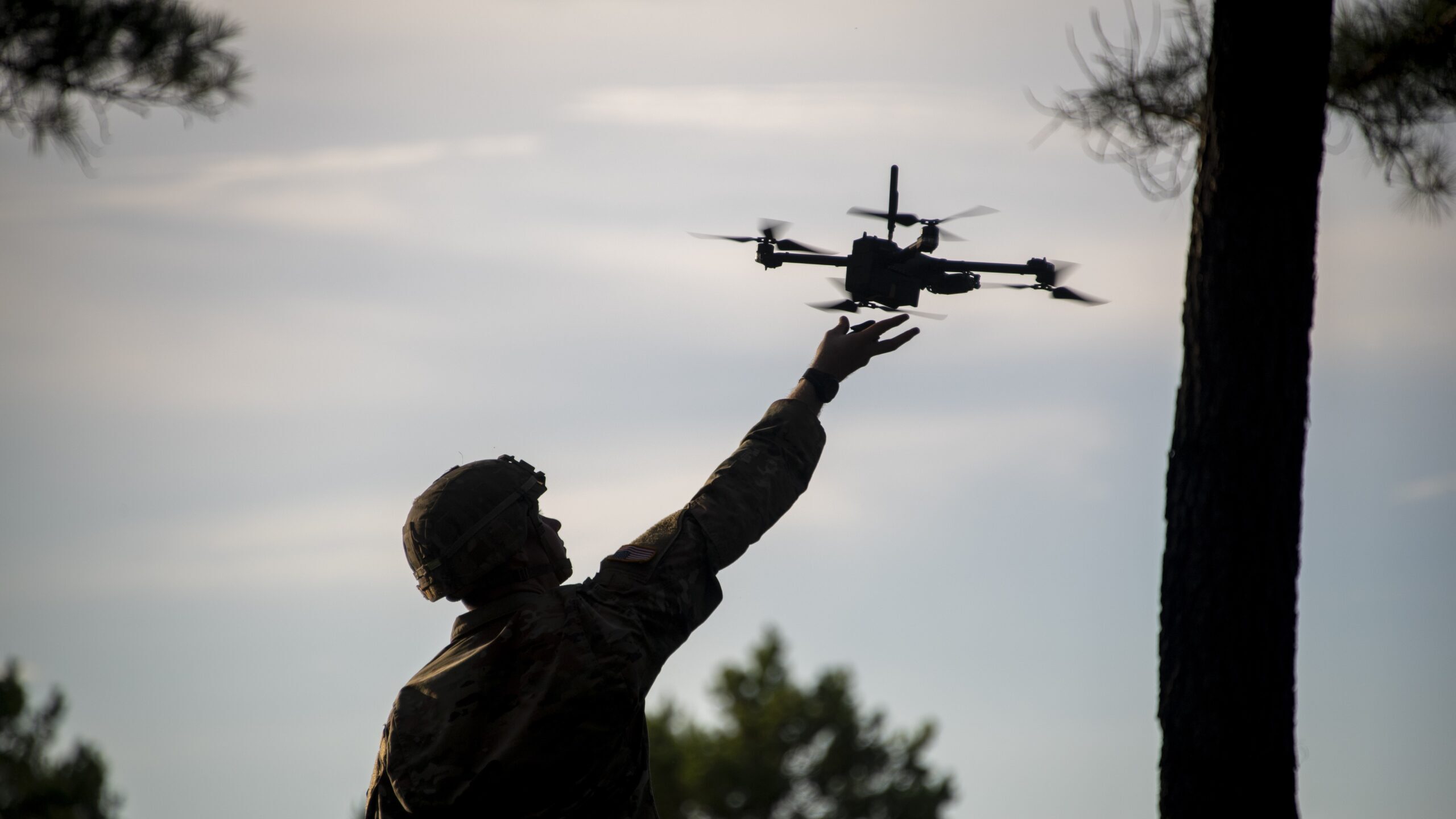ASHLEY ROQUE

A soldier tests a candidate for the Army’s Short-Range Reconnaissance (SRR) drone in 2020 (US Army)
SMD SYMPOSIUM — The US Army has discovered a new obstacle in its quest to use high-energy lasers to defend soldiers and installations against the growing threat of drones: some of the systems have proved difficult to maintain in remote locations.
“Lasers are complicated. This is not a Humvee that’s sitting in the motor pool,” Lt. Gen. Daniel Karbler, the head of US Army Space and Missile Defense Command and Joint Functional Component Command for Integrated Missile Defense, told reporters here in Huntsville, Ala. “Many of the some of the main [laser] components… you’re not going to have a supply room or maintenance office full of repair parts. Those are going to be ones that are going to have to be built out.”
Maj. Gen. Sean Gainey, the director of the Joint Counter-Unmanned Aerial Systems Office, agreed. He told an audience here that of lasers as counter-drone systems, from a “training perspective and an organization perspective, things are proceeding relatively quickly… But it’s the sustaining aspect that we have to do better if we want to scale this across the force.”
To date, the Army has sent 10 kilowatt high-energy lasers to Africa Command (AFRICOM), Central Command (CENTCOM) and Indo-Pacific Command (INDOPACOM) for operational assessments, with plans to send a 20-kW platform to CENTCOM, Gainey said.
Gainey said, for instance, “We’ve had three or four systems in the AFRICOM [area of responsibility] and essentially it takes three to make one. [It’s] a consistent challenge.”
Karbler said that when the lasers stop working in spots like inside the AFRICOM, acquiring spare parts and finding someone with skills to fix it is a challenge.
Beyond The Pew
Russian and Ukrainian militaries reliance on aerial drones to attack targets is shaping the US Army’s approach to develop a layered architecture to down the threats, and that goes beyond high-energy lasers to include high-powered microwaves and a host of kinetic weapons.
“The Russians attacking multiple targets, aside from just military targets, should cause everybody cause for concern, because you can get missile defense, at every single thing that could be attacked and the Russians attacking every target out there,” Karbler said.
In addition to continuing to field cUAS systems already in the inventory, Gainey’s team has been testing out newer systems at various demonstrations, including one in June at Yuma Proving Ground where the Army tested five companies’ solutions against single, Group 3 (up to 1,320 pounds) one-way attack unmanned aerial systems, also known as suicide drones.
In June 2024, the service will conduct the fifth such demo, and this time will focus on technology to down drone swarms, according to a slide Gainey showed the audience.
“Whether it’s flying multiple group 3 [UAS] to try to overwhelm our operators and our capabilities, or is it a swarm attack where you have several hundreds of quadcopters essentially overwhelming your radars or sensors” is one threat set the service needs to address, he added.
No comments:
Post a Comment